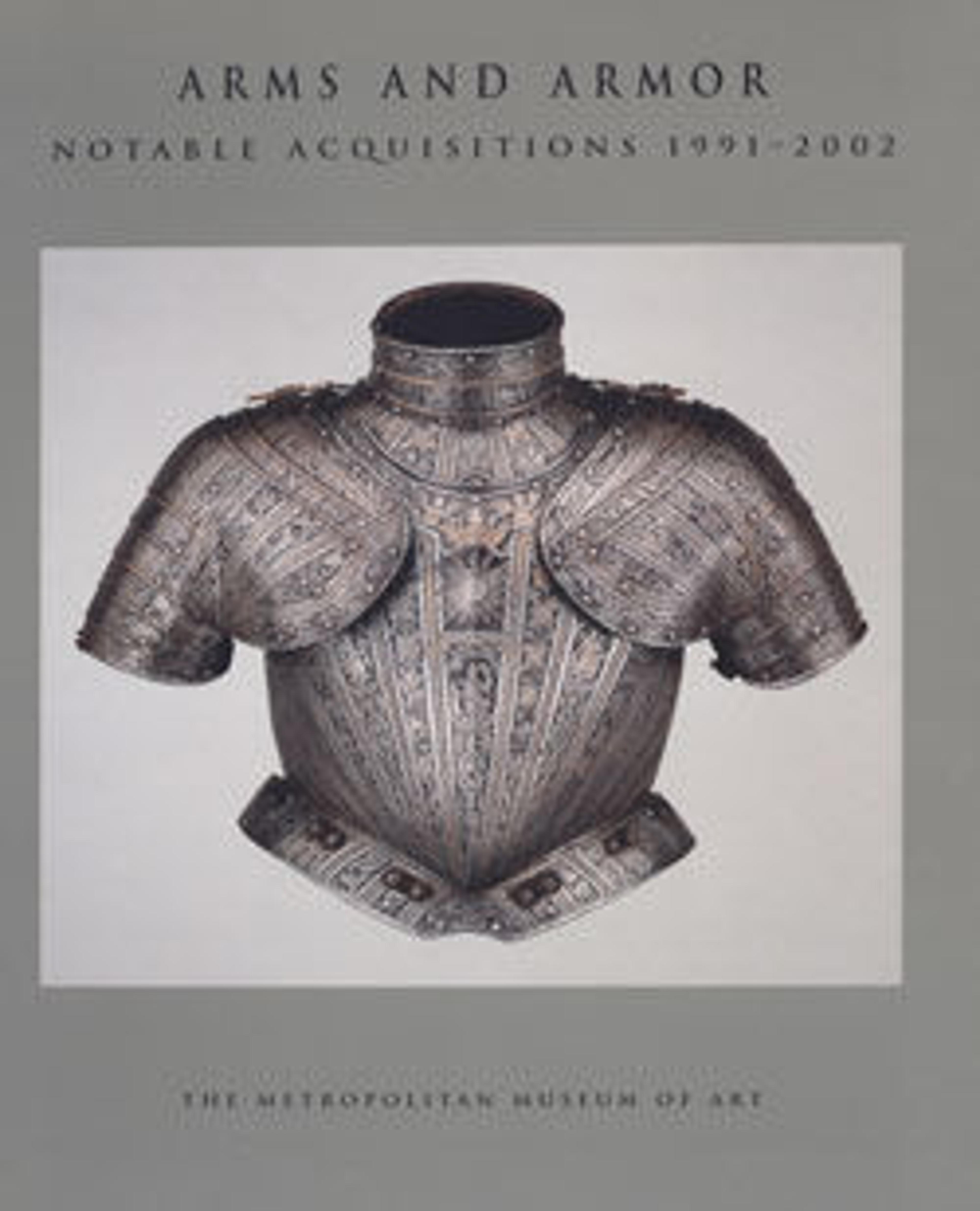Horseman’s Ax of Cardinal Ippolito de’ Medici (1511–1535)
This elegantly proportioned and delicately ornamented ax probably served more as a symbol of authority than as a weapon for mounted warfare. The surfaces are etched and gilt with foliage on an obliquely hatched ground, in the manner of early-Italian ornamental prints. The ax blade is further decorated on one side with a shield enclosing the Medici arms and a Latin inscription around the edges BENIFICIVM · DANDO · ACCEPIT · QVI · DIGNO · DEDIT (He who confers a benefit has received one if he has given it to a man worthy of it), and on the other side with the device of an inflatable soccerlike ball and the inscription FALLENTI · NON · FACILE · RVRSVS · ADHIBENDA · EST (Trust is not again to be placed easily in those who have once deceived). Although the inflatable ball was used as a personal badge by several members of the Medici family, here it most likely refers to Cardinal Ippolito de' Medici (1511–1535), a youthful prelate more at home in armor than his scarlet robes of office. In 1532 Ippolito commanded an expedition against the Turks in Hungary, an event immortalized in Titian's portrait in the Uffizi, Florence, in which the cardinal wears the exotic costume of a Hungarian soldier. This ax very likely accompanied Ippolito on that campaign.
For almost two centuries a large armory occupied a suite of galleries on the upper floor of the Uffizi, where the dynastic collections of the Medici rulers of Florence were displayed. The armory was seen by a steady stream of local and foreign visitors who marveled at harnesses worn by famous men, curious weapons of earlier times, and richly jeweled arms from the Orient. The Museum's ax undoubtedly entered the armory as a memento of Ippolito following his death, but it is only clearly identifiable in an inventory of the Medici armory in Florence in 1695, where it is described as having a wooden haft studded with brass nails with rosette heads. The present haft is a modern replacement. In 1775, when the Medici collections were reorganized, a large portion of the armory was sold. The dispersal scattered the contents far and wide, but more than a half dozen of these arms have entered the Metropolitan's collection.
For almost two centuries a large armory occupied a suite of galleries on the upper floor of the Uffizi, where the dynastic collections of the Medici rulers of Florence were displayed. The armory was seen by a steady stream of local and foreign visitors who marveled at harnesses worn by famous men, curious weapons of earlier times, and richly jeweled arms from the Orient. The Museum's ax undoubtedly entered the armory as a memento of Ippolito following his death, but it is only clearly identifiable in an inventory of the Medici armory in Florence in 1695, where it is described as having a wooden haft studded with brass nails with rosette heads. The present haft is a modern replacement. In 1775, when the Medici collections were reorganized, a large portion of the armory was sold. The dispersal scattered the contents far and wide, but more than a half dozen of these arms have entered the Metropolitan's collection.
Artwork Details
- Title:Horseman’s Ax of Cardinal Ippolito de’ Medici (1511–1535)
- Date:ca. 1530–35
- Culture:Italian
- Medium:Steel, gold, wood
- Dimensions:L. 30 3/4 in. (78.1 cm); L. of axe head 5 1/4 in. (13.3 cm); Wt. 2 lb. 8 oz. (1134 g)
- Classification:Shafted Weapons
- Credit Line:Purchase, Ronald S. Lauder and The Sulzberger Foundation Inc. Gifts, 1993
- Object Number:1993.61
- Curatorial Department: Arms and Armor
More Artwork
Research Resources
The Met provides unparalleled resources for research and welcomes an international community of students and scholars. The Met's Open Access API is where creators and researchers can connect to the The Met collection. Open Access data and public domain images are available for unrestricted commercial and noncommercial use without permission or fee.
To request images under copyright and other restrictions, please use this Image Request form.
Feedback
We continue to research and examine historical and cultural context for objects in The Met collection. If you have comments or questions about this object record, please contact us using the form below. The Museum looks forward to receiving your comments.
